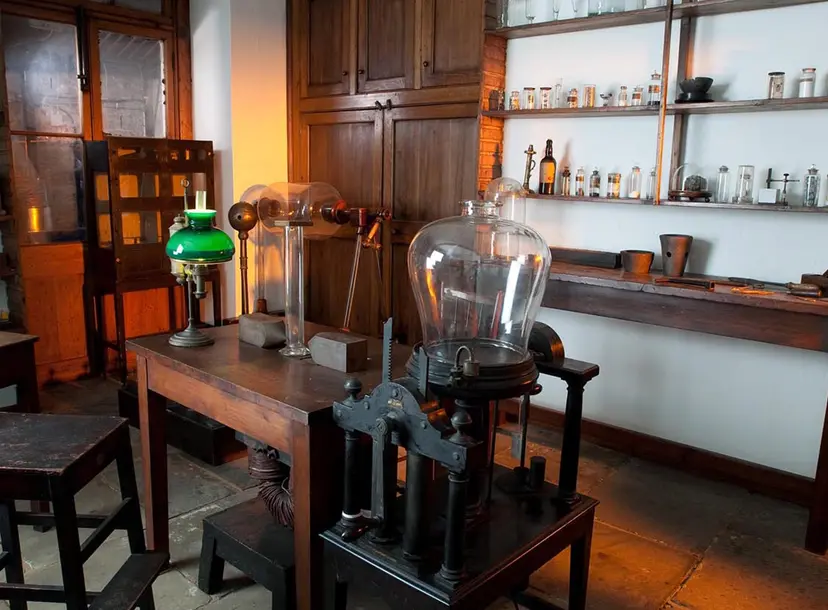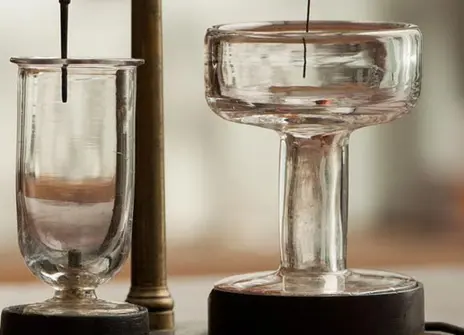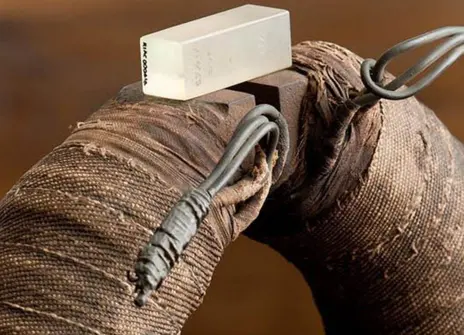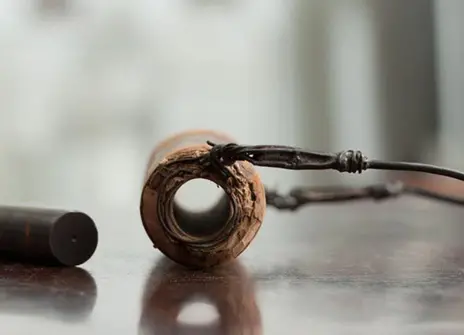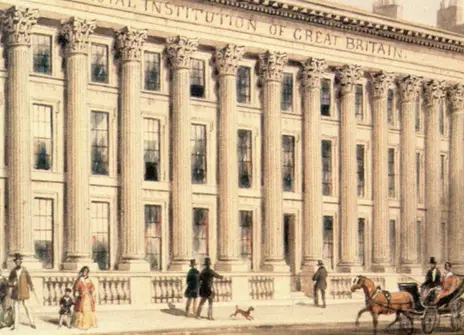About
This is the actual laboratory where Michael Faraday made his fundamental discoveries of the magneto-optical effect and of diamagnetism. The room is preserved in the basement of the Royal Institution and forms the heart of the Faraday Museum.
Before the Ri moved in, the room was a servants hall, as can be seen by the old dumbwaiter which Faraday later used to store his experiments (behind the door in this photo). By 1819 it was used as an apparatus store and sometime in the 1820s Faraday quietly took it over for his own research. The room is set under the main part of the building and has little natural light, which made it perfectly suited to experiments looking at beams of light.
After Faraday’s death in 1867, the laboratory became a storeroom and was left undisturbed. In 1931 the centenary of his discovery of electromagnetic induction was celebrated with a huge exhibition in the Albert Hall and a full-sized replica of the lab was built in for the exhibition. The history of the original room was finally appreciated and since then it has served as the core of the Royal Institution’s museum. The modern arrangement of the room is based on a painting of it from the 1850s by Faraday’s friend Harriet Moore. All the objects displayed here, with the exception of the oil lamp, were used by Faraday and include some of his major discoveries and key apparatus such as the electric motor, homopolar generator and the giant electromagnet he used in his diamagnetic research.
Visit
You can visit Faraday's magnetic laboratory in person at the Faraday Museum.
